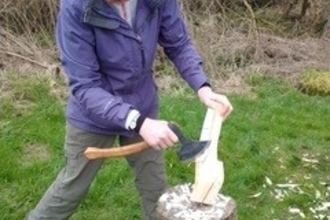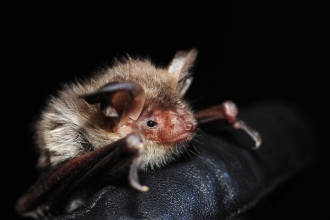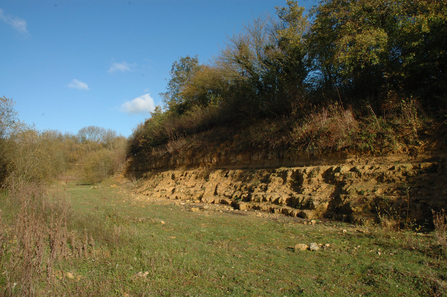
Where to go in January
College Lake in winter by Kate Sheard

Ardley Wood Quarry, Oxon
This quarry and nearby railway cutting have geological features of national importance - as well as abundant wildlife. The layered bare limestone rock faces give a fascinating insight into the site's Jurassic past (more than 160 million years ago). Medieval earthworks give Ardley Wood Quarry archaeological interest too.
Scrub, woodland and rough grassland make up the diverse array of habitats along with seasonal ponds. Listen out for an array of birds flitting around in the trees. There are also plenty of fungi and mosses to discover.
Access: Undulating, mostly firm and flat; steep embankment to south.
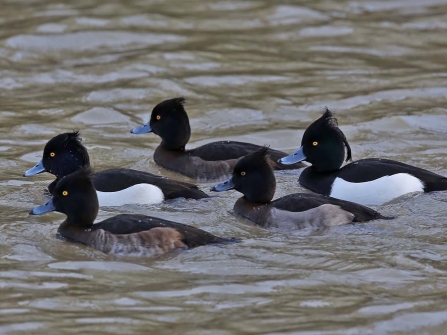
Tufted ducks by Margaret Holland
College Lake, Bucks
College Lake is widely regarded as one of the best places in Buckinghamshire for water birds, and with many hides overlooking the lake, this is a great destination for bird watchers or for families, whatever the weather or time of year.
A 2-mile circular walk takes you around the whole lake. Perfect as an introduction to the site. Pop into the cafe and shop afterwards and warm up with a cuppa.
Access: Gentle slopes, 90% surfaced paths, gates, benches. Please note: some of our paths are uneven. Some wheelchair access, including hides; two mobility Tramper vehicles are available to use - contact us on 01442 826774 or collegelake@bbowt.org.uk to book.
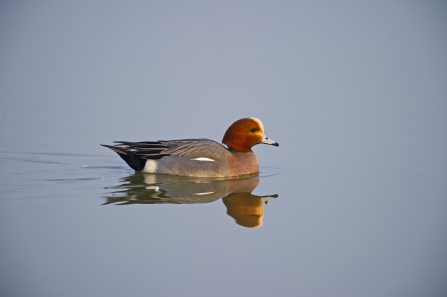
Wigeon by David Tipling/2020VISION
Foxcote Reservoir, Bucks
Enjoy watching the comings and goings of visiting winter waterfowl in this quiet corner of Buckinghamshire. Created in 1956 by damming a small tributary of the River Great Ouse, this site has become important for the numbers of wintering waterfowl, especially wigeon and coot.
On a cold winter's day the expanse of open water is likely to hold rafts of wigeon, coot and tufted ducks (it is the male tufted duck that has the bold black and white plumage). These are joined by smaller numbers of goldeneye, goosander, teal, shoveler and occasionally pintail, striking visitors from further afield.
Access: Gentle slope. Wheelchair access possible in dry weather.
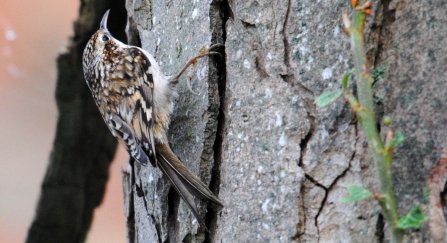
Treecreeper by Amy Lewis
Foxholes, Oxon
Once part of the ancient Wychwood Forest, this tranquil woodland nature reserve sloping down to the River Evenlode has wildlife interest and colour all year round. Together with its centuries-old oak and beech, as well as ash coppice, plantation and woodland rides, there are ponds and more open areas that used to be heathland. Birdlife and fungi are abundant in the winter months.
Access: Gently sloping; mainly grassy, soft when wet, some roots, gaps (0.5m wide), kissing gate. Off-road pushchair recommended.
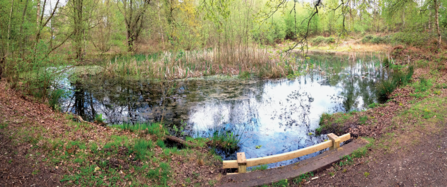
Padworth Common, Berks
Padworth Common nature reserve is a tranquil haven for wildlife with heathland, woodland, ponds and alder-lined gullies. The common is nestled on the upper plateau of the Kennet Valley and can form part of a walk down to the River Kennet and back, past a Norman church, Padworth College and the Kennet and Avon Canal.
Access: Paths on north common remain relatively dry throughout the year whereas those on south common are seasonally wet but more level. Terrain is largely flat.
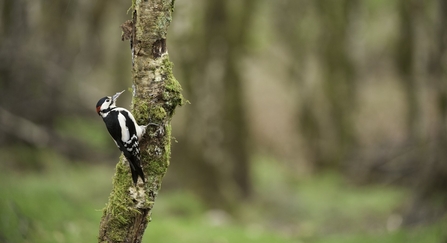
Great spotted woodpecker © Mark Hamblin/2020VISION
Wildmoor Heath, Berks
Unlike many other flat heaths, Wildmoor Heath is situated on a slope and offers visitors a wonderful range of habitats and views, from wet and dry lowland heath and valley bog, to mature pine and broadleaved woodland. Wildmoor's varied habitats attract a range of birds.
A separate part of the reserve called Broadmoor Bottom can be accessed from Magdalene Road off the A3095. This area contains heathland, mire and woodland and is crossed by a number of paths.
Access: Variable, mainly firm, gently sloping, sandy paths, some boggy peat, some rough underfoot, can be very muddy in winter; gates, stiles, boardwalks


